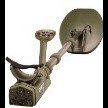Interview With Brent Weaver, Senior Design Engineer, Garrett Metal Detectors
-
Similar Content
-
- 0 replies
- 182 views
-
- 2 replies
- 920 views
-
- 4 replies
- 471 views
-
- 7 replies
- 1,159 views
-
- 1 reply
- 2,549 views
-
- 10 replies
- 1,011 views
-
-




.thumb.jpg.95344db3aeef0a4c6c73420daa366191.jpg)






Recommended Posts
Create an account or sign in to comment
You need to be a member in order to leave a comment
Create an account
Sign up for a new account in our community. It's easy!
Register a new accountSign in
Already have an account? Sign in here.
Sign In Now